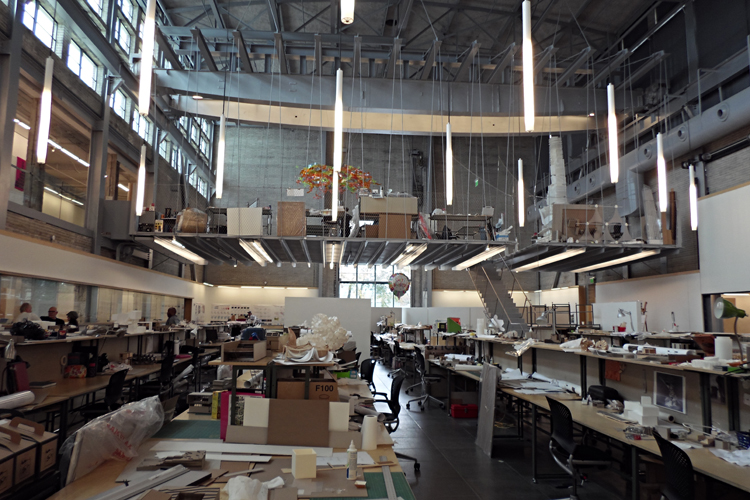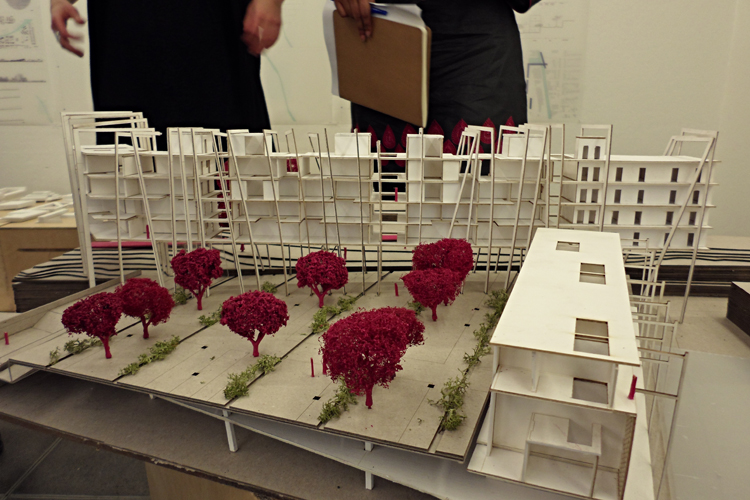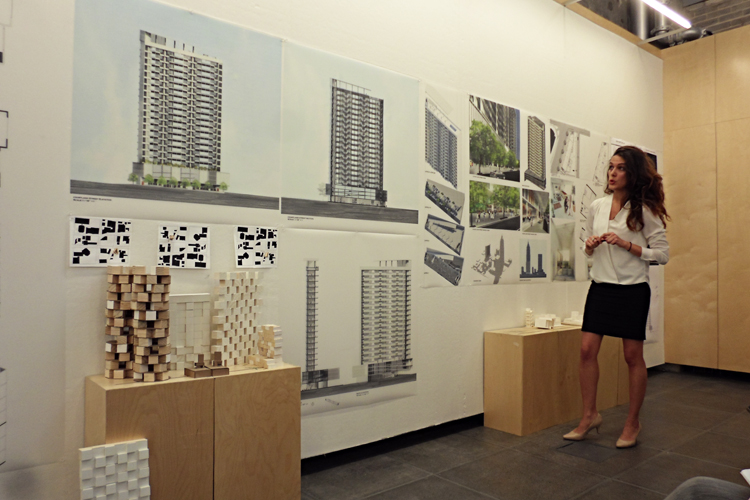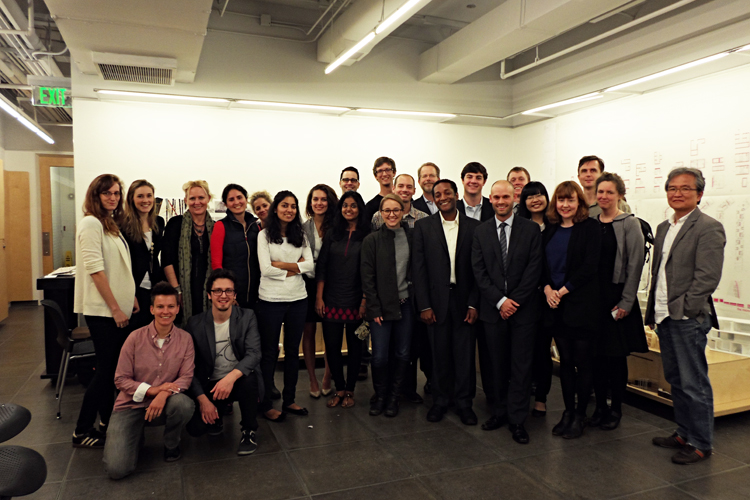News
One of the highlights of 2013 – a year jam-packed full of landmark moments for CHPC – has been working with the Georgia Tech School of Architecture in the development of a design + research studio for graduate students entitled 21st Century Housing: Making Room in the Contemporary City.
The studio, headed by Associate Professor and Architect Michael Gamble, challenges student teams to put together full design proposals for mixed residential/commercial developments that incorporate high-performance active and passive energy systems. The brief is already extremely challenging. They have to conduct their own site selection–picking sites that are not only available for development, but that will enhance the neighborhood and follow urbanist principles. They have to combine innovative architecture with cutting-edge building technologies. They have to conduct energy analysis to ensure that their proposal has zero net energy consumption and zero carbon emissions. They have to develop a financially viable building.

Georgia Tech School of Architecture design studio
Earlier this year, Georgia Tech graduate Stephen Taul visited the Making Room exhibition at the Museum of the City of New York. Stephen felt a strong connection between the Making Room proposals and the design + research studio undertaken by the Georgia Tech graduate architecture students. The goal of their studio is to develop fully-realized buildings that actually respond to environmental realities, as well as support the needs of 21st century city. The exhibition made Stephen feel that it would be valuable to extend this goal even further and to ask the students to also find ways for their proposals to respond to the ‘social and demographic realities’ of Atlanta – by incorporating some alternative housing unit typologies.
Atlanta is experiencing the same demographic and lifestyle shifts as cities all over the US. People are staying single for longer, which is reshaping household arrangements in radical ways. The traditional nuclear family household is declining, giving rise to a boom in single person households and households with multiple adults sharing. In addition, Atlanta is also experiencing a surge in demand for housing in the urban center that has good public transport connections and convenient amenities.

One of the proposals by the Georgia Tech students
Stephen reached out to CHPC to consult on the program, and we met with him and Michael Gamble to help them understand the Making Room principles and the strategies for demographic analysis that we have employed. And Resource Furniture, our partners in the Making Room exhibition, became sponsors of the studio, alongside the Alcoa Foundation, Architecture for Humanity Pillar of Sustainable Education, and Southface.
And with astonishing speed and expertise, the 21st Century Housing studio was developed in time for the fall semester. The first semester is to select a site, develop the general concept for the proposal, undertake demographic analysis to understand the lifestyles of the potential clients, and design the building and the housing unit layouts. In the spring semester, students will focus on the interiors and the materials for the building envelope.
You can read all of the details of the studio on their dedicated website.
On December 3, CHPC’s Sarah Watson was thrilled to be invited to be a part of the panel for their end of semester design review to see the student’s work so far.
Sarah was deeply excited and inspired by the student’s proposals. Most especially, it was startlingly impressive to see such a confident understanding of the Making Room principles – about how housing and interior design can respond to demographic and lifestyle shifts. To blend this with urban planning, urban renewal, sustainability and urbanism was really exhilarating.
Many of the projects responded directly to Atlanta’s growing single-person households by developing well-designed compact apartments in dense buildings, for single adults of all ages. At the review, we had lots of fun debates about the accompanying communal spaces of such buildings, and management strategies that ensure their success. One student was so committed to housing for single adults that she did not want to be on a team; she wanted to go solo! She designed a highly dense building of split level studios which would have fit it well in our exhibition. And one team took the notion of ‘extra housing options’ so far that they created an endless menu of design options for their small studios so that they would satisfy single adults of all ages and backgrounds.

Team (of one) presents their micro-unit building
Other proposals reexamined the definition of a ‘housing unit’ and included live/work blended spaces, or accessory units that could be rented out or used to accommodate adult family members. The urban carriage houses of one proposal were an excellent idea to create a sub-unit attached to a townhouse.

Building proposal that would be seen in the Atlanta skyline
For more details on the studio and the review, read Resource Furniture’s blog here – which also takes a sneaky look at Sarah and Lisa Blecker’s downtime in Atlanta after the review (it includes a peek at Atlanta’s amazing food scene).
Keep an eye on our website for more updates on this program as the school year continues. We would like to extend huge thanks to Michael Gamble, Stephen Taul, Dr. Steven French, and the faculty of the Georgia Tech School of Architecture for allowing us to contribute to this incredibly exciting studio, and for funding our travel and accommodation to take part in the review. And – as always – thank you so much to Resource Furniture for their continued partnership, friendship, and support of the Making Room initiative and CHPC.
News by Topic
News by Housing Type


